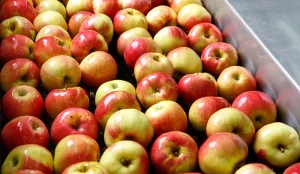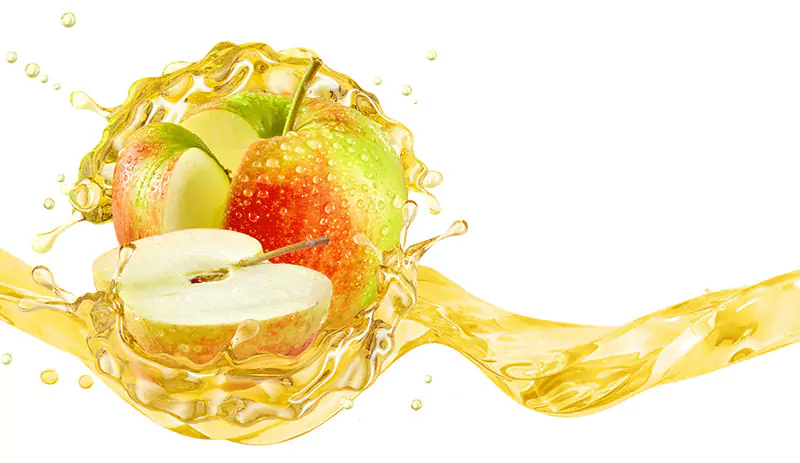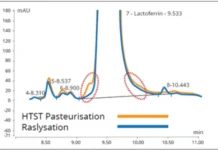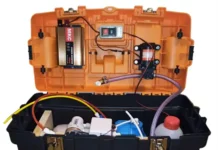Chris Hartman
founder and president, Headwater Manufacturing
To set the stage, it is perhaps helpful to review some of the basic science – indeed, very basic. This article looks at the issue of UV treatment from an engineering and project management perspective, not from a microbiology or food science background. The author has had the privilege to work with some of the best scientists in this field as, together, they have honed their efforts to test and validate UV treatment processes.
As interest in UV treatment grows – and more and more individuals and businesses seek better and more healthful, efficient and affordable means to pasteurize juices and other beverages – there is a need for more accessible information about UV. Specifically, information that would provide a window into the current understanding of the effectiveness of UV treatment technology across a wide range of beverages. Additionally, how to best validate a process that utilizes UV treatment technology as part of a food safety plan would be immensely helpful.
Background
Thermal energy moves reliably through materials, perhaps uniquely to each material, but reliably. With some mixing and a certain amount of time, one can safely assume that all the material has reached a certain temperature. Pathogens, yeasts and molds reliably die at certain temperatures. Documenting that a material was at a certain temperature – above that in which pathogens survive – for a certain amount of time is a reassuring way to validate the food safety process engaged.
Likewise, pressure almost immediately moves through a fluid material, consistently and quickly dispersing, and reliably delivering its impact throughout. Pathogens, yeasts and molds reliably die at certain pressures. Documenting that a material was at a certain pressure (above that in which pathogens survive) for a certain amount of time also is a reassuring way to validate the food safety process engaged.
UV, alternatively, is governed as it moves into materials, if it moves into them at all. The level of UV transmittance within any given material has physical and chemical variables at play. Absorption, shadowing and quenching are all possible ways in which UV light waves are halted or otherwise made ineffective. The opaqueness of a liquid to normal, visible light is a good starting point to imagine UV transmittance, but the correlation is limited. Clear water, for example, which is UV-transparent, is effectively treated using UV. A juice made of beet, kale or cucumber is another story.
It is possible to show the ways in which UV light waves deactivate pathogens, yeasts and mold – not the same as the kill achieved with heat or pressure, but rather mutation of the DNA, blocking viable reproduction. However, it cannot be confidently assumed that UV light waves are contacting pathogens, yeasts and mold throughout a liquid, as can be done with temperature and pressure. Herein lies the challenge of UV treatment in general and of UV treatment validation specifically.
That, as it were, is the stage. Next is the quest.

UV for pasteurization
In collaboration with Randy Worobo, Ph.D., at Cornell University, work has been done for more than 20 years testing UV as an effective means with which to pasteurize beverages. This work began with apple cider. In 1998, after an E. coli contamination, the FDA began to mandate that apple cider must either be pasteurized or a warning label – with a skull and crossbones-type message – must be placed on the container.
Thermal pasteurization was not only an expensive capital investment for small- and mid-sized cider mills to consider, it was widely accepted that heating the cider up to a pasteurizing temperature would diminish the flavor and texture. Meanwhile, members of the founding FPE engineering team were working with UV light in the microchip manufacturing process. During a conversation, over cider and doughnuts, the idea to use UV as an alternative to thermal pasteurization was hatched. Design and prototyping began immediately. Years were spent running trials on evolving UV treatment technology.
Delivering the appropriate dose of UV to the apple cider, requiring assurance that the appropriate UV exposure was delivered throughout the cider, was the initial design and engineering challenge. Innovation and experimentation led to a process that combined thin film flow and turbulence to create adequate UV exposure and effective pathogen reduction in the cider. However, the second design and engineering challenge became the more complicated issue to overcome: How to monitor, maintain and record that UV dose so as to have a process that could be confirmed and, thus, validated. It was the development of sophisticated sensors, monitoring software and control systems – coupled with thousands of experimental trials – that led to the first FDA-approved UV treatment process for the pasteurization of apple cider.
The scientific path to validation followed the usual scientific method. Many trials were run using UV to kill a surrogate pathogen. Using live pathogens for the initial phase of frequent experimentation is costly and slow. However, once the 5-log reduction of those surrogate pathogens was achieved – the gold standard in effective treatment – a correlation study was required to verify that the surrogate pathogen behaved the same way live pathogens would during the UV treatment process in that juice. Although it was likely that they would, the responsible scientist, of course, would want to see that validated.
The initial experimentation and validation studies were done on a “lab machine” – a version of equipment that would never be used in a commercial setting. Thus, it was acceptable to run live pathogens through it. The correlation study was important in that way too, because – although the necessary pathogen reduction using UV treatment equipment was shown – each specific machine built for commercial use had to be verified, validating that it behaved as expected in reducing pathogens. Since this machine was intended for commercial use, that validation had to be done with the surrogate pathogens.
The validation trial had three steps: Initial experimentation to show that UV treatment effectively created a 5-log reduction in surrogate pathogens in the lab machine; a correlation study to show that live pathogens behaved in the same manner; and a final validation study using surrogate pathogens within the machine designed and built for commercial use.
This is still the case for apple cider. Despite the hundreds of machines built and validated, the scientific and regulatory confidence does not exist to validate these machines based on consistent design and build standards. The validation report after a round of treatment is not simply that a certain temperature or pressure was sustained for a certain amount of time; it is a more complicated calculation that connects UV transmittance and dwell time, and documents microjoules per square centimeter of UV energy.
Each CiderSure processing unit, the UV treatment technology specific to the apple cider industry, is individually validated with apple cider that has been spiked with the E. coli surrogate. The process outcome is subsequently analyzed to confirm that the desired 5-log reduction is achieved. Although it is possible to monitor UV transmittance and control flow to assure the proper dwell time – the associated UV dose and effective treatment overall – the “black box” nature of this type of process monitoring does not instill trust within the regulatory community. To build that trust, each machine must show that it works to reduce pathogens in the specific juice it is certified to treat before it can be commissioned in the field. Indeed, after a certain amount of time – every three years – the machine must be revalidated to make sure it is still performing as intended.
Looking ahead
In the last several years there has been an explosion of interest in alternatives to thermal pasteurization. The cold-pressed juice industry, and the general movement in the beverage industry for more “clean label” approaches to production, has pushed the innovation around UV’s utilization beyond apple cider. High-pressure pasteurization is a common choice alternative, but it is extremely expensive and is not glass bottle friendly.
The initial design and engineering challenge around successfully using UV to treat apple cider has evolved. Vegetable and fruit juice blends, nut milks and other consumable liquids – some with only a fraction of the UV transmittance level of apple cider – are being successfully treated with UV. The validation process for these treatment plans, however, is the same as for apple cider. Initial experimentation to see if surrogate pathogen deactivation can be achieved, live pathogen correlation studies and then actual validation of the machine intended for commercial use with the specific juice intended for production – using a surrogate pathogen – is still the standard process. The validation is on that machine, with that juice. Any change in recipe or desire to produce additional juices leads to new validation requirements. And, after a certain amount of time, this all must be repeated.
As UV’s utility continues to be developed as an alternative form of pasteurization, the process of validation will also continue to develop. Scientific rigor and confidence in a food safety process will necessarily lead the way. There is still clearly work to be done to understand what variables are at play that can be monitored and reported on that give confidence that a UV system is appropriately and successfully working.
Headwater Food Hub technology looks at real-time UV transmittance and flow rate and calculates UV dosage accordingly. Other technologies look at viscosity, fluid dynamics and calculate surface exposure probabilities. Everyone can point to UV dosage levels that successfully deactivate pathogens, yeasts and mold. Everyone can also see the unique nature of that dose, unique to specific juices and machine configurations.
Conclusion
Right now, process validation requires replicating the exact process, on actual pathogens, and confirming its effectiveness. As deeper understanding develops on the ways and means of UV treatment, there will be an important, ongoing quest for a more efficient and overarching process for validation. Like all good quests, there is some uncertainty on the outcome. However, the beverage manufacturing industry and the scientific community are sending some of their best people on that quest.
Contact: Chris Hartman, [email protected]





